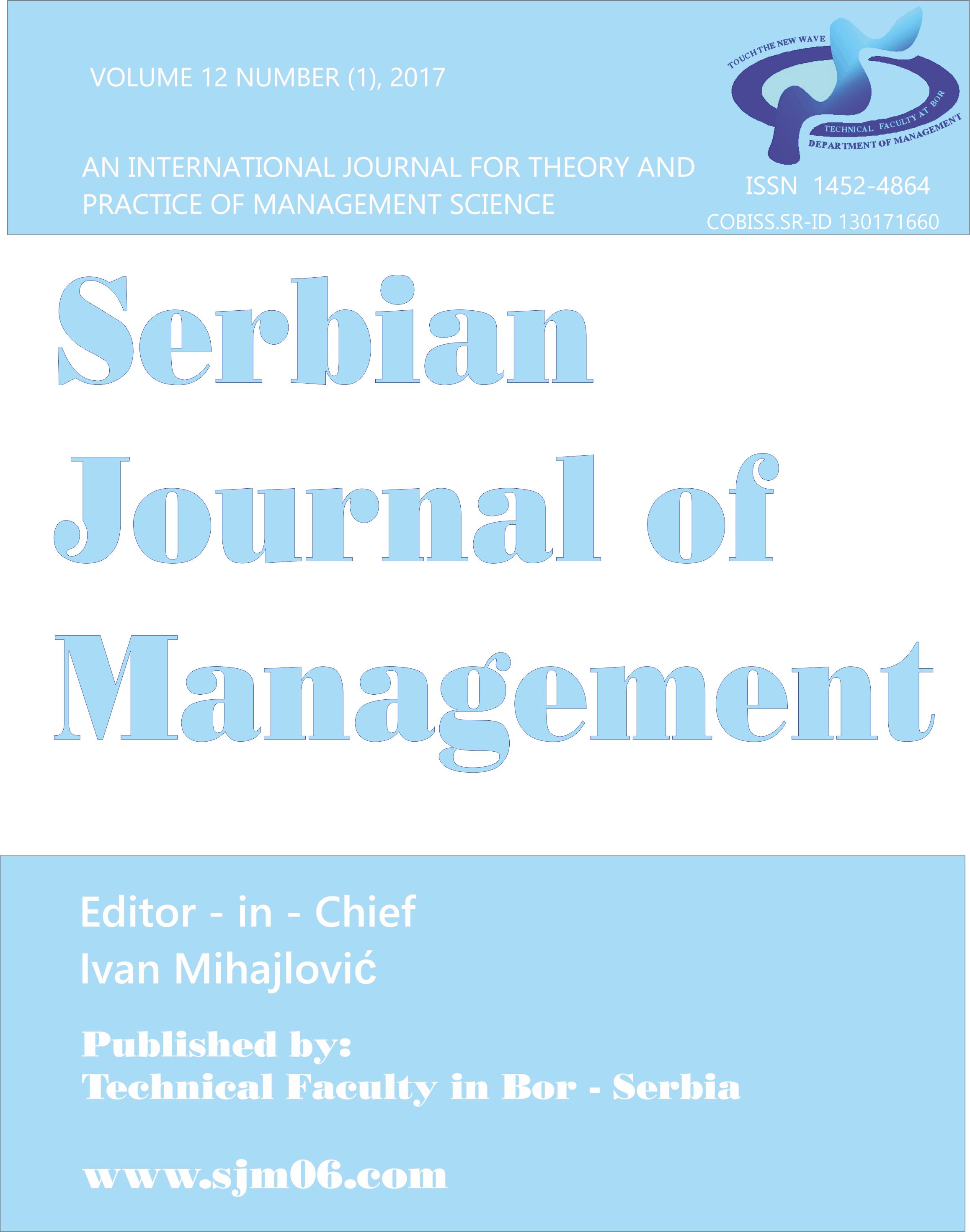Entrepreneurship performance of Vietnam
Abstract
The study aims to measure entrepreneurship performance of Vietnam in comparison to Asian countries by applying the Global Entrepreneurship Development Index (GEDI) and then employed the Penalty for Bottleneck (PFB) methodology to allocate priority policies for the improvement of entrepreneurship performance in Vietnam. Specifically, the GEDI consisting of three sub-indices: Entrepreneurial Attitudes, Entrepreneurial Abilities and Entrepreneurial Aspiration, which are divided into 14 pillars and further subdivided into 28 variables, is used to identify the best and worst performing variables of the GEDI in Vietnam in comparison to Asian countries. Then the PFB methodology provides a more realistic analysis, aiming to discover bottle-neck factors, which are poorly performing system components before suggesting recommendations to achieve the greatest improvement of entrepreneurship performance in Vietnam. The results indicate that ten bottlenecks of 14 pillars are poorly performing with very low scores in Vietnam, in which the top priority policy is given for five pillars, including Risk acceptance, Opportunity perception, Internationalization, Technology absorption and Process innovation.
References
Acs, Z. J., Autio, E. & Szeb, L. (2014). National systems of entrepreneurship: Measurement issues and policy implications. Research Policy, Vol. 43, 476-494.
Acs, Z. J. & Szeb, L. (2009). The Global Entrepreneurship Index (GEINDEX). Foundations and Trends in Entrepreneurship, 5(5), 341-435.
Acs, Z. J. & Szeb, L. (2011). Global Entrepreneurship and Development Index 2011. Cheltenham, UK: Edward Elgar Publishing.
Acs, Z. J. & Varga, A. (2005). Entrepreneurship, agglomeration and technological change. Small Business Economics, 24(3), 323-334.
Anh, N. Q. & Sullivan, M. G. (2016). Economic reform and entrepreneurship in Vietnam: A policy perspective. Pp. 109-125 in J. Ateljević & J. Trivić (Eds.), Economic Development and Entrepreneurship in Transition Economies: Issues, Obstacles and Perspectives. Switzerland: Spring International Publishing.
Enrico, S. & Hien, T. T. (2013). The interplay of human and social capital in shaping entrepreneurial performance: The case of Vietnam. Small Business Economics, 40(2), 435-458.
Hoi, V. Q., Trang, V. T. & Hoang, V. Q. (2016). Relationship between past experience, social network participation and creative capacity: Vietnamese entrepreneurship survey, working paper, Centre Emile Bernheim, Solvay Brussels School of Economics and Management.
Huan, L. M. & Tuan, N. P. (2014). Understanding entrepreneurial perception and business conditions in Vietnam through the approach of the Global Entrepreneurship Monitor. VNU Journal of Science: Economics and Business, 30(2), 13-27.
Iversen, J., Jorgensen, R. & Malchow-Moller, N. (2008). Defining and Measuring Entrepreneurship”, Foundations and Trends in Entrepreneurship, 4(1), 1-63.
OECD (2007). OECD Framework for the Evaluation of SME and Entrepreneurship Policies and Programmes. Paris: OECD Publishing.
Pempel, T. J. (2005). Remapping East Asia: The Construction of a Region. Ithaca and London: Cornell University Press.
Swierczek, F. W. & Ha, T. T. (2003). Entrepreneurial orientation, uncertainty avoidance and firm performance: An analysis of Thai and Vietnamese SMEs. Entrepreneurship and Innovation, February, 46-58.
Shane, S. & Venkataraman, S. (2000). The promise of entrepreneurship as a field of research. Academy of Management Review, 25(1), 217-226.
Szerb, L., Aidis, R. & Ács, Z. J. (2012). A comparative analysis of Hungary’s entrepreneurial performance in the 2006 - 2010 time period based on the Global Entrepreneurship Monitor and the Global Entrepreneurship and Development Index methodologies. Pécs: Carbocomp Ltd,.
Stephanie, J. & Rafael, M. (2016). Opening up to international investment and diversification: A case study of Vietnam. Maastricht: The Maastricht School of Management.
Tarabusi, E. C. & Palazzi, P. (2004). An index for sustainable development. BNL Quarterly Review, Vol. 229, 185-206.
VCCI (2014). Global Entrepreneurship Monitor Vietnam Report 2013. Ha Noi: Vietnam News Agency Publishing House.
The Author wishes to submit the Work to SJM for publication. To enable SJM to publish the Work and to give effect to the parties’ intention set forth herein, they have agreed to cede the first right to publication and republication in the SJM Journal.
Cession
The Author hereby cedes to SJM, who accepts the cession, to the copyright in and to the paper.
The purpose of the cession is to enable SJM to publish the Work, as first publisher world-wide, and for republication in the SJM Journal, and to grant the right to others to publish the Work world-wide, for so long as such copyright subsists;
SJM shall be entitled to edit the work before publication, as it deems fit, subject to the Authors approval
The Author warrants to SJM that:
- the Author is the owner of the copyright in the Work, whether as author or as reassigned from the Author’s employee and that the Author is entitled to cede the copyright to SJM;
- the paper (or any of its part) is not submitted or accepted for publication in any other Journal;
- the Work is an original work created by the Author;
- the Author has not transferred, ceded, or assigned the copyright, or any part thereof, to any third party; or granted any third party a licence or other right to the copyright, which may affect or detract from the rights granted to SJM in terms of this agreement.
The Author hereby indemnifies the SJM as a body and its individual members, to the fullest extent permitted in law, against all or any claims which may arise consequent to the warranties set forth.
No monetary consideration shall be payable by SJM to the Author for the cession, but SJM shall clearly identify the Author as having produced the Work and ensure that due recognition is given to the Author in any publication of the Work.
Should SJM, in its sole discretion, elect not to publish the Work within 1 year after the date of this agreement, the cession shall lapse and be of no further effect. In such event the copyright shall revert to the Author and SJM shall not publish the Work, or any part thereof, without the Author’s prior written consent.

